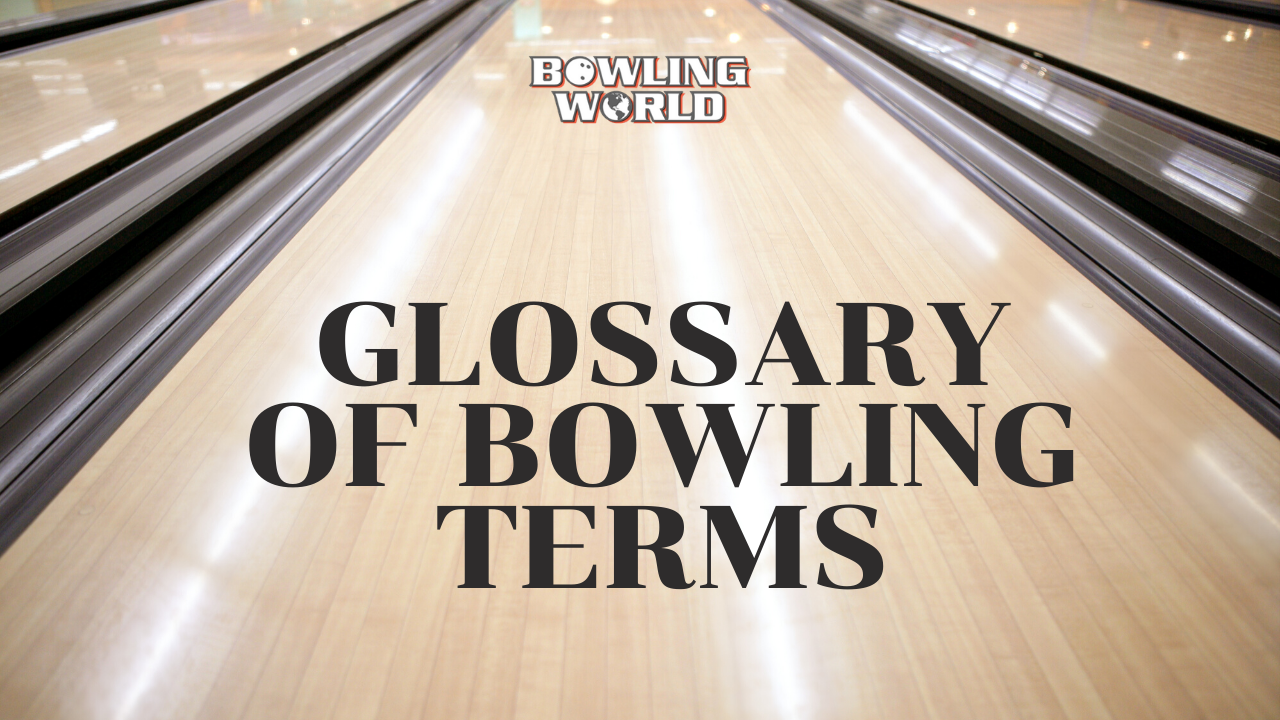FREE SHIPPING ON ORDERS OVER $30
Glossary of Bowling Terms

In this glossary, we define many of the common terms associated with the sport of bowling. Use this page as a reference while reading some of our other articles. If there's a term you'd like us to add, or a definition you'd like us to clear up, leave a comment below!
Angular
- Describes the shape of motion seen in a ball
Approach
- Area extending from the pit to the foul line
- Movement a bowler takes getting to the release at the foul line
Armswing
- Movement of your bowling arm from the pushaway to the release
Arrows
- Triangular markers on the lane used for aiming/targeting
Asymmetric
- Not identical on both sides of a central line
Backend
- The end of the lane closest to the pins where most of the balls’ performance takes place
- Term used to describe how much hook a ball has at the end of the lane (ex. The Radical Results has a lot of backend)
Benchmark
- Typically the first ball of the bag. Its purpose is to let the bowler know what to expect from the lane, especially when the pattern is unknown. Smooth, predictable motion
Board
- Individual strips of wood, pieced together to form a bowling lane. Bowling lanes consist of 39 boards. These can also be used for targeting. Modern lanes are not constructed of individual boards anymore. Most are a synthetic material
Breakpoint
- Area where the ball begins to hook back towards the pocket
Brooklyn
- Shot that crosses over the head pin opposite of the side it was thrown. A Right handed Brooklyn strike would hit the 1-2 pocket
Carrydown
- Lane oil that’s been pushed down lane due to a repeated number of shots
Conventional
- Type of grip where you put your middle and ring fingers in the holes down to the second knuckle
Core
- The inside of bowling ball containing a symmetric or asymmetric weight block
Coverstock
- The outer shell of the bowling ball
Differential (Diff)
- Mass property of a core. The lowest RG axis subtracted from the highest RG axis will yield RG differential. Commonly describes the flare potential of a bowling ball
Fingertip
- Type of grip where your put your middle and ring fingers in the holes down to the first knuckle
Flare
- Migration of the ball’s track from the axis at release to the axis at impact
Hook
- Technique where the ball curves down the lane as opposed to rolling straight
House Ball
- Communal balls provided by the bowling center
Hybrid
- A combination of a solid color and a separate pearl color in one ball
Layout
- A measurement used to orient a core relative the the bowler’s PAP to optimize performance
Mass Bias
- Also referred to as PSA, or highest RG axis, this is the axis the core would stabilize around if rotational energy were constantly being applied
Pancake
- Flat weight block often used in polyester balls
Pattern
- Distribution of Lane oil
Pearl
- Pigment used is coloring bowling balls
Pitch
- The angle at which the thumb and finger holes are drilled into the ball
Polyester
- Plastic coverstock commonly used to throw at spares because of it’s low friction characteristics
PSO
- Pro Shop Operator
Reactive Resin
- Coverstock that produces more friction with the lane than Urethane and Polyester
Revs
- Number of times the ball rolls over its circumference on the lane
RG
- Radius of gyration
Skid
- Reaction of the ball as it first makes contact with the lane
Solid
- Coverstock lacking pearlescent pigment
Span
- The distance between the thumbhole and fingerholes
Spare
- Knock down all remaining pins on your second shot
Spare Ball
- An additional ball that bowlers use to convert certain spares. Typically they’ll want this ball to go straight (polyester, urethane)
Split
- A gap between two or more pins after your first shot
Strike
- Knock down all 10 pins on your first shot
Symmetric
- Core that is in equal proportion about a central line
Track
- Portion of a thrown bowling ball that makes physical contact with the lane surface
Urethane
- Coverstock that produces more friction than polyester













Comments